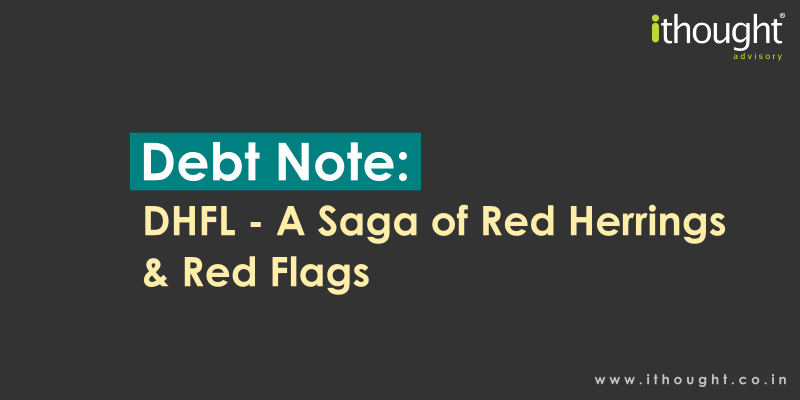
The DHFL story has been unraveling for some time in the public domain. At every stage, investor concerns have been assuaged. One begins to wonder whether this is just smoke and mirrors or if there is a way for investors to exercise prevention rather than cure in their investment decisions.

NBFC Crisis
The IL&FS default last year rattled several skeletons in the closet. Banks and mutual funds became reluctant to lend to NBFCs and DHFL was no exception. In fact, around the time of the IL&FS default, an AMC sold nearly 300 Crores of AAA-rated DHFL bonds which led to speculation on a rating downgrade and sent the stock price tumbling by nearly 40%. Subsequently, both the AMC and DHFL clarified that the decision was not motivated in any way and that there was no reason to panic.
Cobrapost
In January this year, Cobrapost did an expose on DHFL. This uncovered what came to be known as “the biggest banking scam in Indian history.” They pointed out that nearly Rs. 31,000 Crores was siphoned off from the company into several shell companies and offshore accounts. Alarm bells were ringing and red flags were raised. Yet, DHFL made good on payments reassuring markets that this was nothing but a red herring.
DHFL Rating Downgrade
Shortly after the expose, several rating agencies downgraded DHFL bonds from AAA to AA+. Rating agencies have since steadily downgraded DHFL debt. It appears that the initial rating downgrade was inadequate as DHFL’s cost of borrowing was higher than those of its peers. This meant that any decline in revenue would further stress its balance sheets.
DHFL Deposits
In May 2019, DHFL in a surprise move announced that it would not allow premature withdrawal of its deposits. It further stated that they would not be accepting new deposits or considering renewals. One must wonder why a company starved of liquidity would refuse additional funds.
DHFL Default
On June 4th DHFL defaulted on its bond payments. Rating agencies finally downgraded DHFL bonds to “D” the lowest credit rating. Consequently, AMCs marked down any bonds they had by 75% to 100%, translating into a sharp decline in NAV of several mutual funds. A clause in the agreement allowed for a grace period for DHFL to pay back creditors. DHFL settled its debt before the grace period ended and defaulted on payments on June 25th.
Box System
Shortly after the default, Money Life Foundation published a post on how DHFL and other companies were using the “Box System” to avoid disclosing loans issued to related parties. The box system is essentially a clever way to raise funds by creating subsidiaries. It’s obvious why lending transactions of a financial institution like DHFL need to be transparent.

Then & Now
In the last week, DHFL has repaid 40% of commercial paper that matured to 12 different creditors. DHFL is waiting for month end cashflows to repay the entire amount. The story won’t end so quickly, as a large portion of DHFL debt matures in August and September of this year. And we’ll all have to wait and watch.
Investment Strategy
As a firm, we have always emphasized on quality when it comes to debt investments. This is solely because debt, as an asset class, appeals to conservative investors who are seeking safety. Quality filters are the most effective risk management tool.

Credit defaults trigger panic in debt markets. In debt mutual funds, a write-down is compounded by panic selling. Retail Investors find themselves in a prisoner’s dilemma situation – they could either take a huge hit by exiting immediately or take a chance and wait it out. Since mutual funds are obligated to meet redemptions, most schemes wind up selling the best bonds to create liquidity. So, the investors who stick around are saddled with lower quality and high-risk bonds.